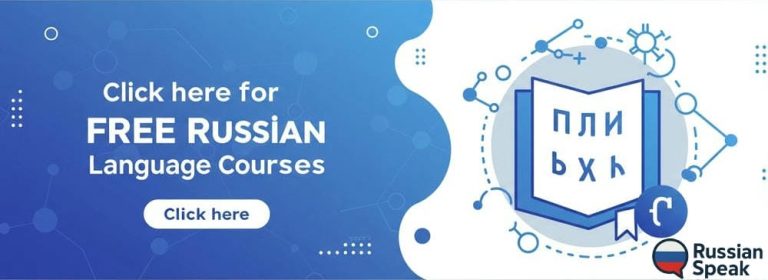Table of Contents
ToggleEssential Cloud Computing Terms

In the field of cloud computing, having a clear understanding of fundamental terms is crucial for IT professionals navigating this rapidly evolving technology landscape. At the core of this terminology are different cloud models and service delivery methods, which dictate how computing resources are provided, managed, and accessed. The primary cloud models include the Public Cloud (Публичное облако, publíchnoye oblako), which offers services over the internet to multiple customers, providing scalability and cost efficiency; the Private Cloud (Частное облако, chástnoye oblako), dedicated exclusively to a single organization, ensuring greater control and security; and the Hybrid Cloud (Гибридное облако, gibrídnoye oblako), which combines elements of both public and private clouds to offer flexibility and optimized resource use. Understanding these models helps organizations choose the right balance between accessibility, control, and security based on their unique needs.
In addition to the cloud models, it is essential to grasp the main service delivery types that define how cloud services are consumed. Infrastructure as a Service (IaaS) (Инфраструктура как услуга, infrastruktúra kak uslúga) provides virtualized computing resources such as servers, storage, and networking over the internet, allowing users to manage operating systems and applications while outsourcing hardware management. Platform as a Service (PaaS) (Платформа как услуга, plátforma kak uslúga) offers a higher level of abstraction by delivering a platform that supports application development without the complexity of managing underlying infrastructure. Lastly, Software as a Service (SaaS) (Программное обеспечение как услуга, prográmmnoye obespechéniye kak uslúga) delivers fully managed software applications accessible through web browsers, eliminating the need for local installation or maintenance.
Mastering these key concepts enables IT professionals to communicate more effectively within their teams and with stakeholders, evaluate cloud service options critically, and implement solutions that align precisely with their organization’s operational goals. This foundational knowledge not only supports strategic decision-making but also boosts overall efficiency by ensuring cloud environments are leveraged to their fullest potential.
Key IT Infrastructure Components
IT infrastructure forms the essential foundation for modern cloud computing environments, allowing organizations to manage resources efficiently and deliver a wide range of services reliably. Understanding the key components of IT infrastructure is crucial for building systems that are both scalable and secure.
At the heart of IT infrastructure lies network hardware (сетевая аппаратура). This includes devices like routers (маршрутизаторы), switches (коммутаторы), and firewalls (межсетевые экраны). Routers direct data traffic between different networks, ensuring information reaches its destination efficiently. Switches connect multiple devices within a local network, enabling smooth communication between computers, servers, and other hardware. Firewalls act as security barriers, filtering data to prevent unauthorized access and protect sensitive information. Together, these components maintain strong connectivity and safeguard network integrity.
Another critical element is data storage (хранение данных). Organizations rely on various storage solutions to save and access large volumes of data quickly. Two popular types are Storage Area Networks (SANs) – сети хранения данных and Network Attached Storage (NAS) – сетевое хранилище. SANs are high-speed networks dedicated to data storage, providing block-level access that is ideal for handling large databases and virtualization workloads. NAS devices, on the other hand, offer file-level storage accessible over a network, making them suitable for sharing files across multiple users or departments. Both SAN and NAS systems are designed to scale easily as data needs grow.
These components—network hardware and storage systems—work in harmony to create an IT environment that is agile and responsive to changing business demands. By investing in reliable network infrastructure (сетевая инфраструктура) and scalable storage options, companies can improve their operational performance while supporting innovation and flexibility in their cloud computing strategies.
Additional insights:
- Redundancy (резервирование) in network hardware ensures that if one device fails, another takes over automatically, minimizing downtime.
- Modern firewalls often include intrusion detection systems (системы обнаружения вторжений) to monitor suspicious activity in real time.
- Cloud providers often use virtualized storage (виртуализированное хранилище) solutions that abstract physical hardware, allowing more efficient resource allocation.
- The choice between SAN and NAS depends on factors like speed requirements, cost, and type of data being stored.
Understanding these components and their functions helps organizations build resilient IT infrastructure capable of supporting today’s fast-paced digital world.
Virtualization and Its Critical Role in Modern IT Infrastructure
In today’s fast-paced technology environment, organizations are increasingly adopting cloud computing to boost business agility and cut costs. However, a foundational technology that often doesn’t get enough attention but is critical to cloud success and overall IT efficiency is virtualization (виртуализация).
What is Virtualization?
Virtualization (виртуализация) refers to the technique of creating multiple simulated environments or virtual machines (виртуальные машины) from a single physical hardware system. Using specialized software called a hypervisor (гипервизор), one physical server is divided into several independent virtual machines (ВМ), each running its own operating system and applications. This enables a single physical server to function as if it were multiple dedicated servers, each assigned to different tasks.
Key Benefits of Virtualization
Maximized Resource Utilization (максимальное использование ресурсов)
Traditional physical servers often run well below their full capacity, leaving much of their processing power, memory (оперативная память), and storage unused. Virtualization consolidates workloads onto fewer physical servers, dramatically increasing resource efficiency. This means organizations can avoid unnecessary hardware purchases, resulting in substantial cost savings (экономия затрат).
Improved Scalability and Flexibility (масштабируемость и гибкость)
Virtual machines can be quickly created, modified, or migrated between physical servers with little or no downtime (время простоя). This flexibility allows IT teams to respond swiftly to changing business demands — for example, scaling resources up during peak periods or scaling down when demand decreases. It also supports diverse environments such as development (разработка), testing (тестирование), and production (эксплуатация) on the same hardware.
Simplified Management and Maintenance (упрощенное управление и обслуживание)
Virtualization platforms offer centralized management tools that automate routine tasks including backups (резервное копирование), updates, and load balancing (балансировка нагрузки). This reduces the complexity and manual effort required for IT maintenance. Additionally, virtualization makes disaster recovery (восстановление после сбоев) easier by allowing virtual machines to be backed up as files and restored on different physical servers.
Energy Efficiency and Environmental Impact (энергоэффективность и влияние на окружающую среду)
Using fewer physical servers means reduced power consumption and cooling needs in data centers (центры обработки данных). By consolidating servers through virtualization, organizations contribute to greener IT practices, lowering their carbon footprint (углеродный след).
Challenges and Considerations
Despite its advantages, virtualization introduces some challenges that organizations need to address:
- Performance Overhead (потери производительности): Running multiple VMs on a single server can reduce performance if resources like CPU and memory are overcommitted or not properly balanced. High-demand applications may require fine-tuning or dedicated resources to function optimally.
- Increased Complexity in Management (сложность управления): Although management tools exist, the added layers of abstraction require IT staff with specialized skills to effectively monitor and optimize both physical and virtual environments.
- Security Concerns (вопросы безопасности): Virtualized environments require strong security measures because vulnerabilities in the hypervisor or any VM could allow attackers access to multiple systems simultaneously.
- Licensing and Compliance Issues (лицензирование и соответствие): Software licensing can be complicated in virtual environments, as some vendors impose restrictions or additional costs for virtualized use.
Why Virtualization Matters Beyond Cloud Computing
While cloud computing depends heavily on virtualization technologies to deliver scalable services, virtualization itself brings value even in private data centers (частные центры обработки данных) and hybrid setups:
- DevOps and CI/CD Pipelines: Developers use virtual machines to create consistent testing environments that replicate production systems exactly.
- Legacy Application Support: Older applications requiring specific operating systems can run inside VMs without dedicated hardware.
- Disaster Recovery and Business Continuity: Snapshots and backups of VMs enable fast recovery from failures or cyberattacks.
Virtualization is more than just a technical tool — it is a strategic enabler that drives efficiency, agility, and innovation within IT operations. Understanding both its benefits and challenges helps organizations optimize their infrastructure, reduce costs, and improve service delivery — all crucial for maintaining competitiveness in today’s digital economy.
Russian Keywords and Phrases on Virtualization Topic
- Виртуализация – Virtualization
- Виртуальная машина (ВМ) – Virtual Machine (VM)
- Гипервизор – Hypervisor
- Оперативная память – RAM (Memory)
- Резервное копирование – Backup
- Балансировка нагрузки – Load balancing
- Центр обработки данных – Data center
- Восстановление после сбоев – Disaster recovery
- Масштабируемость – Scalability
- Гибкость – Flexibility
- Потери производительности – Performance overhead
- Вопросы безопасности – Security concerns
- Лицензирование – Licensing
These terms are essential for understanding virtualization concepts both in English and Russian-speaking IT environments.
Security Concepts in Cloud Computing
A thorough understanding of security concepts in cloud computing is essential for IT professionals steering through today’s digital landscape. Effective cloud security measures guarantee the protection of sensitive data against breaches and unauthorized access. Data encryption plays a pivotal role in safeguarding information, both in transit and at rest. Familiarity with these concepts empowers professionals to create robust strategies that mitigate risks.
Understanding security concepts in cloud computing is vital for IT professionals to protect sensitive data and maintain trust. Here is an expanded explanation of the key concepts with examples, followed by a list of related Russian terms useful for English speakers learning Russian.
1. Cloud Security (Облачная безопасность)
Cloud security involves all measures taken to protect data, applications, and services stored or running in the cloud. This includes defenses against hacking, data leaks, and service interruptions.
Example:
A company uses a cloud provider like AWS or Microsoft Azure and implements firewalls, identity verification, and threat detection to protect their cloud infrastructure.
2. Data Encryption (Шифрование данных)
Encryption means converting data into a coded form that only authorized users can decode. It protects data both when it is being sent over the internet (in transit) and when it is stored (at rest).
Example:
When you send an email, encryption ensures that only the recipient can read it, even if someone intercepts the message.
3. Access Control (Контроль доступа)
Access control defines who can access or use certain resources in the cloud. It uses permissions, roles, and policies to limit access based on user identity or device.
Example:
An employee might have permission to view files but not to delete them, while a manager has wider access rights.
4. Compliance Standards (Стандарты соответствия)
Compliance standards are rules and regulations set by governments or industries to ensure data protection and privacy. Cloud providers and users must follow these standards to avoid legal penalties.
Example:
GDPR (General Data Protection Regulation) in Europe requires companies to protect personal data of EU citizens.
Related Russian Terms for Cloud Security
| Russian (Cyrillic) | English Phonetic | English Definition |
|---|---|---|
| Облачная безопасность | Oblachnaya bezopasnost’ | Cloud security |
| Шифрование данных | Shifrovanie dannykh | Data encryption |
| Контроль доступа | Kontrol’ dostupa | Access control |
| Стандарты соответствия | Standarty sootvetstviya | Compliance standards |
| Пароль | Parol’ | Password |
| Аутентификация | Autentifikatsiya | Authentication |
| Авторизация | Avtorizatsiya | Authorization |
| Защита данных | Zashchita dannykh | Data protection |
| Угрозы безопасности | Ugrozy bezopasnosti | Security threats |
| Нарушение данных | Narushenie dannykh | Data breach |
| Шифр | Shifr | Cipher |
| Ключ шифрования | Klyuch shifrovaniya | Encryption key |
| Защищённое соединение | Zashchishchyonnoe soedinenie | Secure connection |
Emerging Trends in Cloud Technology
The landscape of cloud technology continues to evolve rapidly, introducing new possibilities that are transforming how organizations operate and innovate. Several emerging trends are particularly important due to their potential to significantly change IT infrastructure and business processes.
One of the most groundbreaking developments is the integration of quantum computing (квантовые вычисления — kvantovyye vychisleniya). Quantum computers use the principles of quantum mechanics to perform calculations at speeds far beyond the capability of classical computers. This means that tasks such as cryptography, optimization problems, and complex simulations can be tackled much more efficiently. For example, companies in pharmaceuticals and finance are exploring quantum computing to speed up drug discovery and risk assessment.
Another major trend is edge computing (периферийные вычисления — periferiynye vychisleniya). Unlike traditional cloud computing, where data is sent to centralized servers for processing, edge computing processes data closer to where it is generated—such as on devices or local servers. This reduces latency (задержка — zaderzhka), which is the delay before data begins to be processed, making it ideal for applications requiring real-time response like autonomous vehicles, smart cities, and industrial automation.
This decentralization of data processing also helps reduce the load on central servers and can improve security by limiting data transfer over networks. Businesses adopting edge computing can thus achieve faster decision-making and more reliable operations.
Furthermore, these trends are driving the growth of hybrid cloud environments (гибридное облако — gibridnoye oblako), where organizations combine private clouds with public cloud services to optimize flexibility, security, and cost-efficiency. Hybrid clouds allow companies to keep sensitive data on private servers while utilizing public clouds for less sensitive workloads or scalable resources.
In addition, artificial intelligence (AI) (искусственный интеллект — iskusstvennyy intellekt) and machine learning (машинное обучение — mashinnoye obucheniye) are increasingly integrated within cloud platforms. This combination enables advanced data analytics, predictive maintenance, personalized customer experiences, and automation of complex tasks.
Key benefits of these emerging trends include:
- Improved operational efficiency (оперативная эффективность — operativnaya effektivnost)
- Enhanced data analytics capabilities (аналитика данных — analitika dannykh)
- Greater agility (гибкость — gibkost) in IT infrastructure
- Reduced latency for real-time applications
- Better security (безопасность — bezopasnost) through distributed data processing
As cloud technology advances, the impact on IT infrastructure will be significant, creating opportunities for businesses to innovate faster and respond more effectively to market demands.
In summary, staying informed about quantum computing, edge computing, hybrid cloud strategies, and AI integration is essential for organizations aiming to leverage the full power of modern cloud technologies. These trends not only improve performance but also open new doors for technological growth across industries.
Test What You’ve Learned about Cloud Computing and IT Infrastructure Vocabulary in Russian
![]()
1. What is the Russian term for “Private Cloud,” and what does it mean?
a) Публичное облако (publíchnoye oblako) – Cloud services provided publicly to many customers
b) Частное облако (chástnoye oblako) – Cloud dedicated exclusively to a single organization
c) Гибридное облако (gibrídnoye oblako) – A combination of public and private cloud services
Correct answer:
b) Частное облако (chástnoye oblako) – Cloud dedicated exclusively to a single organization
![]()
2. Which Russian term corresponds to “Virtual Machine,” and what is its function?
a) Виртуализация (virtualizatsiya) – The technique of creating multiple simulated environments
b) Виртуальная машина (virtuálnaya mashina) – A simulated computer system running on physical hardware
c) Гипервизор (gipervizor) – Software that manages virtual machines
Correct answer:
b) Виртуальная машина (virtuálnaya mashina) – A simulated computer system running on physical hardware
![]()
3. Which of the following Russian terms means “Data Encryption,” and why is it important?
a) Шифрование данных (shifrovanie dannykh) – It converts data into coded form to protect it from unauthorized access
b) Контроль доступа (kontrol dostupa) – It controls who can access cloud resources
c) Резервирование (rezervirovanie) – It ensures backup copies of data
Correct answer:
a) Шифрование данных (shifrovanie dannykh) – It converts data into coded form to protect it from unauthorized access
Frequently Asked Questions
What Are the Different Cloud Service Models Available?
Various cloud service models exist, including IaaS, which offers scalability benefits; PaaS, providing streamlined development features; and SaaS, delivering user-friendly advantages. Each model supports diverse cloud deployment strategies, enhancing flexibility and efficiency for enterprises.
How Do I Choose the Right Cloud Provider?
Choosing the right cloud provider involves evaluating vendor reputation and measuring service scalability. A reputable vendor guarantees reliability, while scalability allows for future growth, enabling users to adapt to changing demands and optimize their operations effectively.
What Are the Cost Implications of Cloud Computing?
The cost implications of cloud computing include evaluating cost efficiency and understanding various pricing models. Organizations must analyze their usage patterns to optimize expenses and guarantee budget adherence while leveraging the flexibility offered by cloud solutions.![]()
How Does Cloud Computing Impact Traditional IT Roles?
Cloud computing considerably alters traditional IT roles, necessitating skill evolution towards cloud roles. Professionals must adapt to new technologies and management practices, fostering flexibility and innovation in their approach to infrastructure and service delivery.
What Skills Are Needed for a Career in Cloud Computing?
To pursue a career in cloud computing, individuals must develop skills in cloud security protocols, data management strategies, and proficiency in cloud platforms. These competencies enable effective handling of data while ensuring robust security measures are in place.



